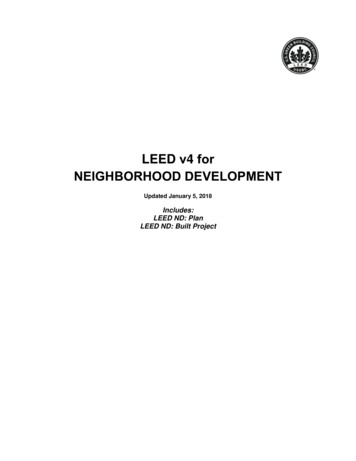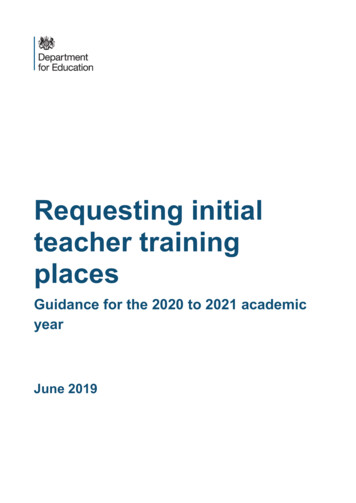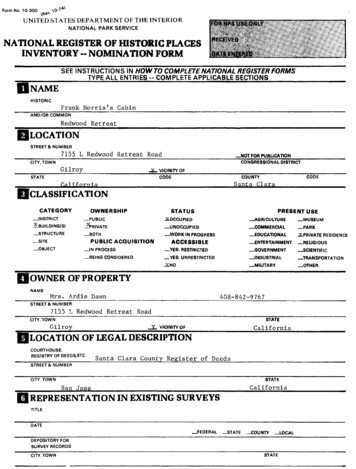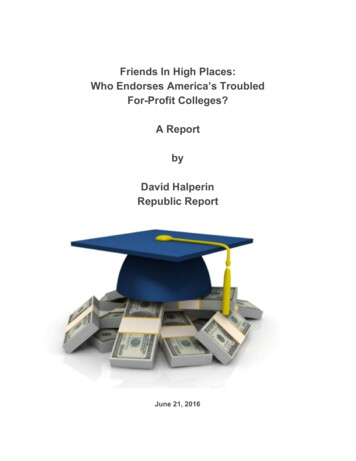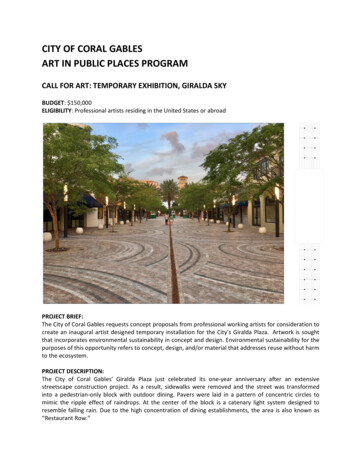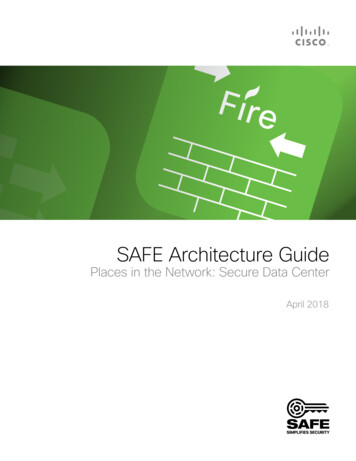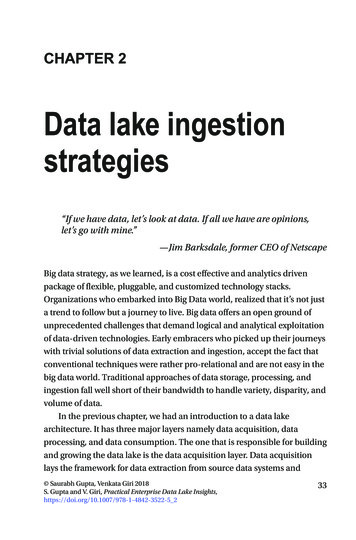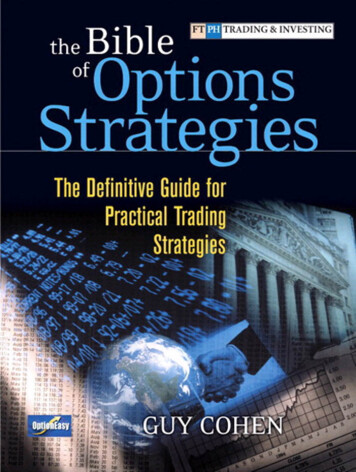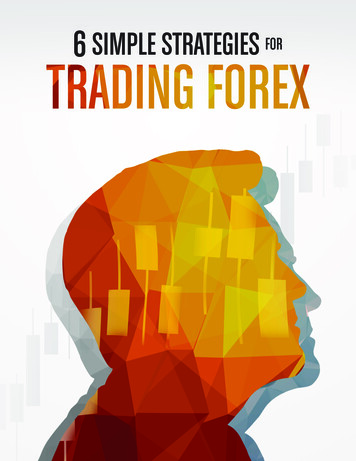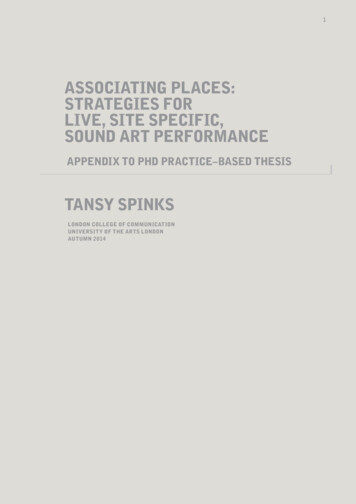
Transcription
1ASSOCIATING PLACES:STRATEGIES FORLIVE, SITE SPECIFIC,SOUND ART PERFORMANCEAPPENDIX TO PHD PRACTICE–BASED THESISTANSY SPINKSLONDON COLLEGE OF COMMUNICATIONUNIVERSITY OF THE ARTS LONDONAUTUMN 2014
3CONTENTSHIGHLIGHTED SOUND ART WORKS5FURTHER SOUND ART WORKS55Sonic Triangle7Henry’s Ballad58House58Brixton Market60Hoop60Windmill I, II, & III62Seafort15Floor Zero23Silent Zone31Sonic Ritual39Take A Space, Make A Sound In It64The Laboratory of Sonic Possibilities47Activated Ballroom64Four Full Stops66Sounding the Portal68Leeds!Leeds!Leeds!70Echo Lake70Chronological catalogue of sound art works 73Publications and conference papers 75CONTENTS OF DVD AND 2 CDS 76
HENRY’S BALLAD HOUSE SONIC TRIANGLE BRIXTON MARKET HOOP SEAFORT WINDMILLS I, II, && III FLOOR ZERO TAKE A SSPACE, MAKE A SOUND IN ITT SILENT ZONE ACTIVATEDBALLROOM SONIC RITUALFOUR FULL STOPS SOUNDING THE PORTAL LEEDS! LELEEDS! LEEDS! ECHO LAKETHE LABORATORY OF SONICPOSSIBILITIES
SONIC TRIANGLE
S ONIC TR I ANGLE9
10S ONIC TR I ANGLE
S ONIC TR I ANGLE11
S ONIC TR I ANGLE13SONIC TRIANGLEDATEthe performer intermittently operating a laptopOctober - November 2009running custom built software based on MAXMSP connected via an audio interface to theFREQUENCY AND DURATIONinstrument and a loop station. A large speakerFour performances throughout the week ofstood in each of the three corners. The improvisedapproximately 8-12 minutes.sounds were panned around the space at variousspeeds, divorcing the source of the sound from theLOCATIONperformer, drawing attention to the unusual shape ofChelsea Triangle Space, Chelsea College of Art,the space and encircling the listeners. The actions,Millbank, SW1.prompted by research into the history of the sitemade use of, for the first time various devices toThe building comprises a single storey, right-activate and layer sounds on the now ‘prepared’angled triangle room with internal walls ofviolin. These included a length of rough twine,breezeblock, a grey painted concrete floor andpieces of copper and plastic piping and a 2” nail.ten feet high ceilings. The performing space,set amid seventeen other exhibitors had a floorThe first section set the scene of the site as marshlandarea of 3’ x 3’ x 3’ and was delineated withby the Thames by building up a series of fast trills,white tape that remained in place throughout.(a familiar mimetic trope for suggesting water)with the aid of twine stretched over the frameEVENTof a hacksaw in place of a bow. This spanned allUncharted Stories, a UAL research group exhibitionfive strings simultaneously to give a fuller sound.and conference.String that frayed and disintegrated whilst beingplayed seemed to suggest elements of decay andSTATED AIMloss that retrospectively reinforced the programmeTo ‘animate’ the space by providing a soundnote. Section two was directly inspired by Jeremyperformance for the exhibition reflecting on theBentham’s proposal of audio surveillance forhistories of the site.the prison building that had previously occupiedthe site, (using a system of listening tubesBRIEF DESCRIPTION OF PERFORMANCEThe violin was played at the centre of the space,within his plans - this was never installed).
14S ONIC TR I ANGLEThree looped layers built up using –“ as a classical violinist only used to a bow ora section of white plastic plumber’s pipe in place ofa finger creating sound on the violin, I was atthe bow moved rapidly from side to side producingfirst shocked then totally fascinated by the sounda quiet scuffling sound, a length of string held atpossibilities such things as a hand ‘sword’ canboth ends making a marching-paced sound, (a briefmake on an electric violin. What you’ve alreadyreference to the parade ground of the Army Medicalheard is still in the present (via the looping andCollege that the art school now occupies), a singlepanning) and also part of the new This left megalvanised nail used to ‘pick’ at the top end of thetoo mesmerised to think anything but ‘where isstrings behind the violin bridge, chosen after researchthis sound coming from and where is it going?’ uncovered the story of a c19th prisoner’s unsuccessfuland required me to be constantly moving roundescape attempt using only a nail.the sonic triangle space catching up with soundonly to find more sounds being added like a huge,Section three used two lengths of copper pipingcrazy fugue a whole new musical sound worldand a bouncing action on the violin string.and way of musical thinking has been opened upThe shorter pipe was used as a stop (like ato me ” (EF)‘bottleneck’ on a guitar). Descending motifs andglissando slides occurred across all the strings“ I liked the way the materials you used changedusing the full range of the instrument. The piecealong with their associations liked the triggerfinished when the performer departed from theof the information sheet . It is always magicspace, leaving the sound ‘unattended’, she thenwhen you walk away and again the music is play-returned either to cut the sound completely aftering by itself so I ask: Where is the music beinga few minutes or to affect a gradual fade.played? In the instrument, the listener, the soundsystem, the room?” (DP)BRIEF EVALUATION AND RESPONSESThe problems of being in a communal space extendedto noise intrusion and the lack of a physical presenceIDENTIFYING ELEMENTS OF THE MATERIALOF THE SITEin the exhibition when there was no performance. Thethe actual – the acoustic in the concrete room.invited audience mixed with an art school audiencethe activated – the performer and the objects used tobut could not include passers-by. However, audiencemake the sounds.responses included –the associative – all the research-prompted soundsmade.“It really helped to have work in the space alreadyas it gave us something to concentrate our focusDOCUMENTATIONon whilst being immersed in the sound of theenclosed DVD Track 1 enclosed CD 1 Track 1 space. It got to the point where it became a per-alternative video and sound file documentationformance for the audience and we were lon the show whilst being accompanied by yourhttp://vimeo.com/18146580instrument. it was really effective.” (MO)
SE A FOR T17
SE A FOR T19
SE A FOR T21SEAFORTDATEto the site and to use the site itself as material. TheJune 24th 2010performer will be activating sounds for live recordings and use an electric violin to layer sound withinFREQUENCY AND DURATIONthe derelict fort. Ideally this will ‘give to the locationOne brief preparatory visit, (postponed six times) anda voice’ through found vibrations and activated acous-two hours for the performance including installationtics. Sounding the fort with a violin, walking aroundand de-installation of equipment.the space to discover what it has to reveal from thehidden secrets of the inside to the immensity of theLOCATIONsea outside.”Redsands Seaforts, Shivering Sands, eight nauticalSummary of aim, by co-performer, Antoine Bertinmiles off the North Kent Coast. The structure is oneof seven anti-aircraft gun forts standing on sandbanksBRIEF DESCRIPTION OF PERFORMANCEin open water at the mouth of the Thames estuary.The structure was chosen as a response to the bien-The setting for the performance was the open, circu-nale call out to make use of an ‘off-site’ location,lar platform at the top of the semi-derelict, three-sto-in or near Whitstable. It as an abandoned place ofrey construction. The platform has a concrete basedefence yet itself vulnerable to decay and for thesurrounded by rusty metal panelling walls four feetpotential sonic properties of the iron structure.high. Built by Guy Maunsell in 1942, the ingenioustripod design was an innovative one, the appearanceBRIEF EVALUATION AND RESPONSESfrom a distance giving the impression of a collectionThere was an urgency to the performance due to theof old box movie cameras on tripods, standing withexcessive heat, the swiftly turning tide and the risk oftheir feet in the ocean.being stranded. The improvised sounds commencedwith the use of very long loops made by ‘activating’EVENTobjects found on site. The violin was brought in laterUnder the auspices of the Whitstable Biennale Fringe,using long, slow bow strokes, (partly inspired by2010, curated by Kate Phillimore.Tony Conrad’s essay Lyssophobia: on Four Violins, of1964). This seemed to create an atmosphereSTATED AIMof contemplative listening, to the seafort and the“To reach a remote site and make live sounds relatedopen water.
22SE A FOR TThe on site audience consisted of who was there – twoceramic insulation bowl, the first use of contact mi-performers, two seafort volunteers (one operatingcrophones, use of knuckles and a drum kit brush, thethe petrol driven generator, a former pirate radioinstrument subsequently brought in.operator) the video operator Nick Rampley and twothe associative – mimicry of wind sounds on thefishermen in a boat below.instrument, the melancholy of the bell, rhythms developing that became redolent perhaps of anti-aircraft“I loved when you started playing the violin on top ofgunfire, the rotten decay of the structure, the decay ofthe structure of fort sound, (kind of the fort’s spectre,the performed sounds – by no means a conclusive list.we would have reanimated). You played in a minimal-One poetic response to the documentation of the eventist way, as if not to take over the place. I thought thisperhaps best captures the event –intervention was very cinematographic, blowing emotions onto the images without disturbing the scene.Once the first-line staunchIn the end I think this is how I like to remember theOf rumbling craftperformance, as a live, cinema sequence/documentaryWith town bound bombsabout the location.”Low – scuddingExtract of the response from the co-performer.the river mouthFor homes curtainedEXTRACT FROM ARTIST’S PROJECT FILEIn blitz - black fear,It was quite apparent once out on the fort what anThese hulks stand togetherextremely hazardous place it would have been for theIn strength still,general public as audience – no fresh water, no WC,Seeing out timethe panic of those with vertigo climbing the verticalAnd now, for one day only,ladders, the likelihood of falling through the decrepitBeing in timefloors into the sea and the issue of public liability.With their own rhythmsAs it was, we had two hours to ourselves in one ofA majesty of formthe most extraordinary environments I have everRinging eerieencountered, where we made and harnessed someTo the drawn bowbeautiful on-site sounds (the metals, the bell soundingAnd mid sea hum.on the buoy, the gulls, the slapping water, the pylon)An elemental pulsethen left, just as swiftly, packing up and lowering theIs pried and coaxedequipment down in a tarpaulin with a pulley to theTo speak againwaiting rigid inflatable boat.To gull and wave.IDENTIFYING ELEMENTS OF THEMATERIAL OF THE SITEExtract from Sound Defence by David Morris, writtenafter viewing the Seaforts documentation.the actual – the sea – waves slapping against thestructure, creaking metal, slight breeze, seagulls,DOCUMENTATIONdistant engines, the bell on the buoy sounding, distantenclosed DVD Track 2 enclosed CD 1 Tracks 4&5drone of the generator.alternative video and sound file documentationthe activated – the rusty metal ordnance mlwith rasping hinges, the radio pylon, salt-crustedhttp://vimeo.com/17884661found objects –whitened animal bones rattling in a
FLOOR ZERO
FLO OR ZER O25
26FLO OR ZER O
FLO OR ZER O27
FLO OR ZER O29FLOOR ZERO[I AM STANDING IN A LIFT]DATEcomplicit in what was occurring, others simply usingFebruary 2011the lift. Each ‘flight’ journey was unique, loopingthe building up sounds differently. Some found thisFREQUENCY AND DURATIONconfusion of layers oppressively claustrophobic.February 8th from 6pm onwards, February 26th ongoing lift flights between 1pm and 3.30pm.One occupant observed that it was interesting how, onstepping into the lift and first hearing the voice, thereLOCATIONwas a direct proportional relationship between theCamberwell College of Art goods lift, Peckham Road,size of the space (small) and the acoustic componentLondon SE5.(a single voice) within it. Once this was amplified andbuilt up the sound became bigger than the space. ThisEVENTboth intrigued and disconcerted her.Part of the Elusive photography exhibition andsymposium in Camberwell Space curated by MartinNewth and Sian Bonnell.REVIEW“In the corridor next to Elusive was a queue. AsRoman Ondak’s Tate acquisition Good Feelings inSTATED AIMGood Times shows, we Brits love a good queue. WeTo provide a sound-based intervention in an everydayalways seem to assume the end of it will hold won-space.ders. Since it was a queue for the lift we assumedthe wonders were in another floor. Not so, the won-BRIEF DESCRIPTION OF PERFORMANCEder was the lift itself. As sets of people crammedIn a goods lift, a microphone recorded the woman’sinto the lift we were trapped in Tansy Spinks’ livevoice intoning – going up, going down, doors closing,sound piece. At first we couldn’t see what the ex-doors opening, floor one, floor six, floor zero. A smalltensive recording apparatus in with us was for, butamplifier relayed the looping sounds back into thesoon enough we felt a claustrophobic nausea as theworking lift which the performer operated.lift voice ‘First Floor, Going Up, Second Floor.’etc. gradually looped and layered to become a ca-BRIEF EVALUATION AND RESPONSEScophany of sound that disorientated and, combinedA variety of users and audiences took part, somewith the movement of the lift, nauseated.
30FLO OR ZER O“When at one point the doors opened and we sawand acoustic properties, serving as a functionala man from the first floor get in smiling (ah! Imeans of transit or vertical transport between levelsfound you!) I realised all sense of time and spa
The violin was played at the centre of the space, . within his plans - this was never installed). SONIC TRIANGLE SONIC TRIANGLE 13. Three looped layers built up using – a section of white plastic plumber’s pipe in place of the bow moved rapidly from side to side producing a quiet scuffling sound, a length of string held at both ends making a marching-paced sound, (a brief reference to .
